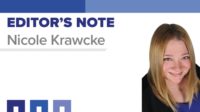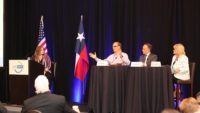It’s clear that people don’t use water as we did in the past. Concerns about water shortages and environmental impacts have led to increased awareness of water efficiency and quality. In fact, I’m having a leak detec-tion system installed in my own home in the next few weeks.
However, according to the National Institute of Standards and Technology (NIST), plumbing codes have not kept pace with the shifting demand, therefore water quality may be suffering. Current codes for plumbing systems within buildings are based partly on data generated nearly 100 years ago, NIST notes. So to help researchers close the knowledge gap and update codes, NIST has produced a list of high priority research needs.
The list of 59 research needs largely draws from discourse among experts in academia, industry and government at a 2018 workshop, in addition to 26 responses to a notice published by NIST in the Federal Register.
To combat the challenges that plumbing designers face, the NIST report recommends that researchers address a plethora of questions, including how water is used in different types of buildings, how water flow and plumbing design affect water quality, what factors influence chemical reactions and bacterial growth in pipes and how fast water quality declines in plumbing systems.
During the virtual Plumbing Industry Leadership Coalition (PILC) meeting held in May, Andrew Persily, chief of the Energy and Environment Division at NIST, discussed the report.
“Our goal is to identify research needs both critical to the design of new systems and the operation and retrofit of existing systems – all about energy efficiency and water quality.
“I need to make it clear that this is not a plan that NIST will be conducting all these research programs,” Persily added. “It is to be determined what we will do given our existing staff, facilities and resources. This is hopefully a plan for the stakeholder community.”
As Persily noted, NIST cannot do all the work alone. The industry needs to pull together to achieve the research goals of improved water efficiency and water quality. NIST will be scheduling virtual workshops in the near future to start the process. To view the entire report, visit https://bit.ly/36POsY2.



